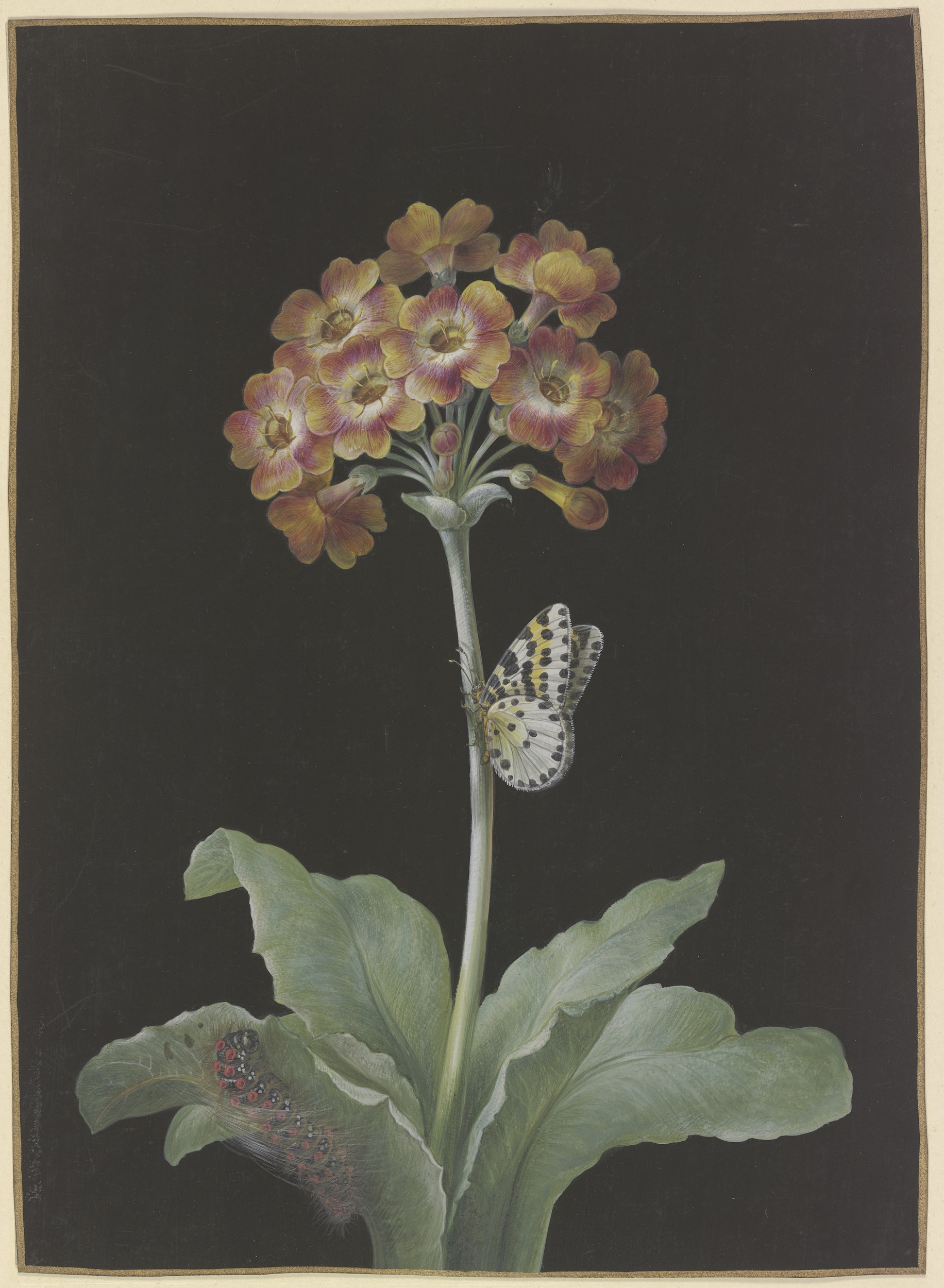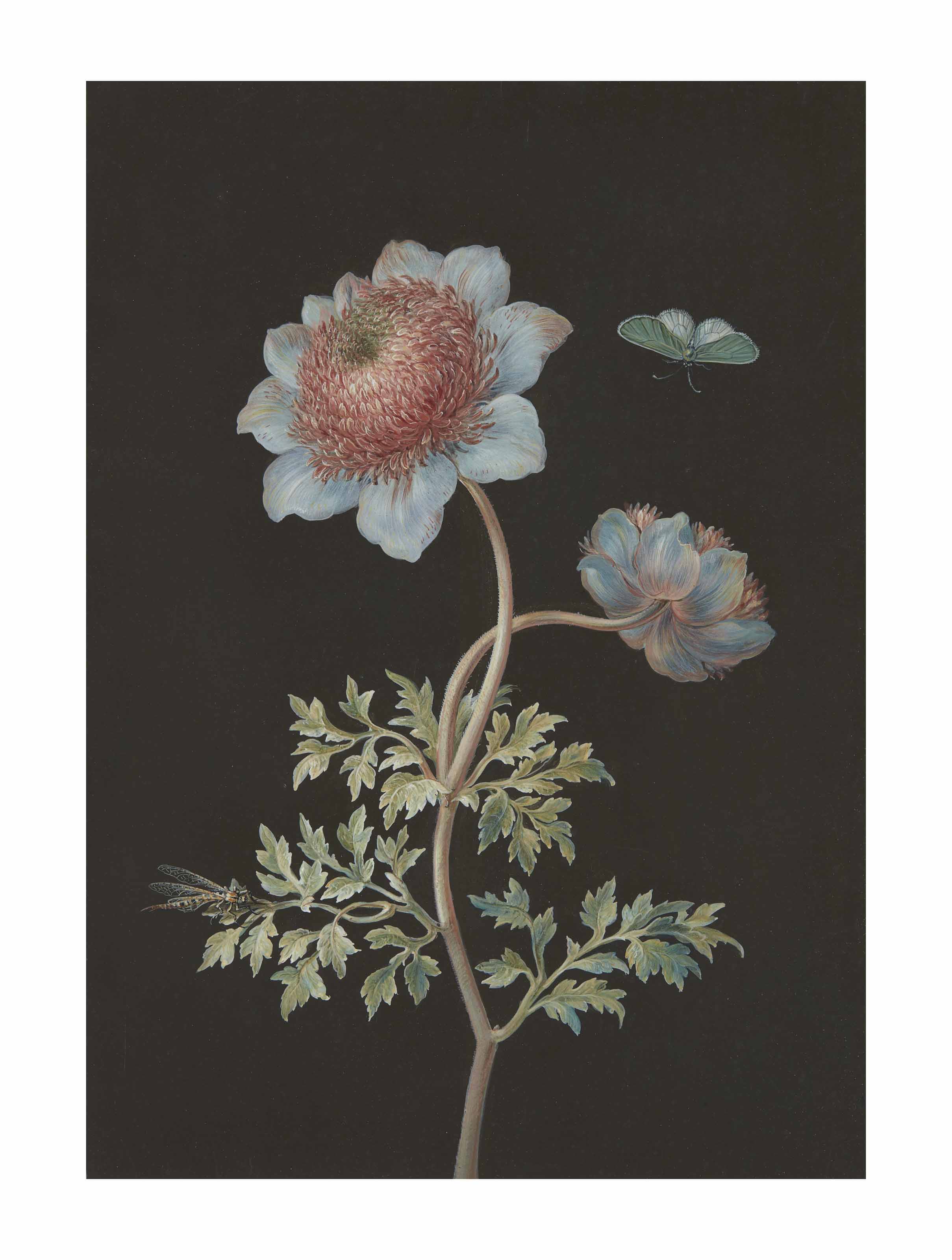With the various activities she pursued in Nuremberg – her drawing oeuvre, her publications and her art lessons – Maria Sibylla Merian (please check her works in our Archive!) founded in that town a tradition of flower and plant depiction by women. Among her followers, some practised the genre on a private/domestic basis, some professionally. In the eighteenth century, the Dietzsches – a family of artists in Nuremberg – adopted and continued that tradition. Barbara Regina Dietzsch and her siblings developed a successful drawing style so painting-like in appearance that, with it, they entered the male-dominated domain of painting. The family produced precious showpieces: depictions of flowers and plants rendered in vibrant colours and with a high degree of plasticity and set off against flat, dark backgrounds. Mounted and framed, they could also be displayed to striking effect on the wall. This type of painting on vellum was superb in quality, especially when it came from the hand of Barbara Regina Dietzsch herself. She can be considered a follower of the Baroque tradition of contemplative art appreciation mindful of Creation. Yet the aspect of scientific fidelity to nature recedes into the background in her works in favour of a highly developed decorative aesthetic.
We present today's work thanks to the Städel Museum.


 Barbara Regina Dietzsch
Barbara Regina Dietzsch